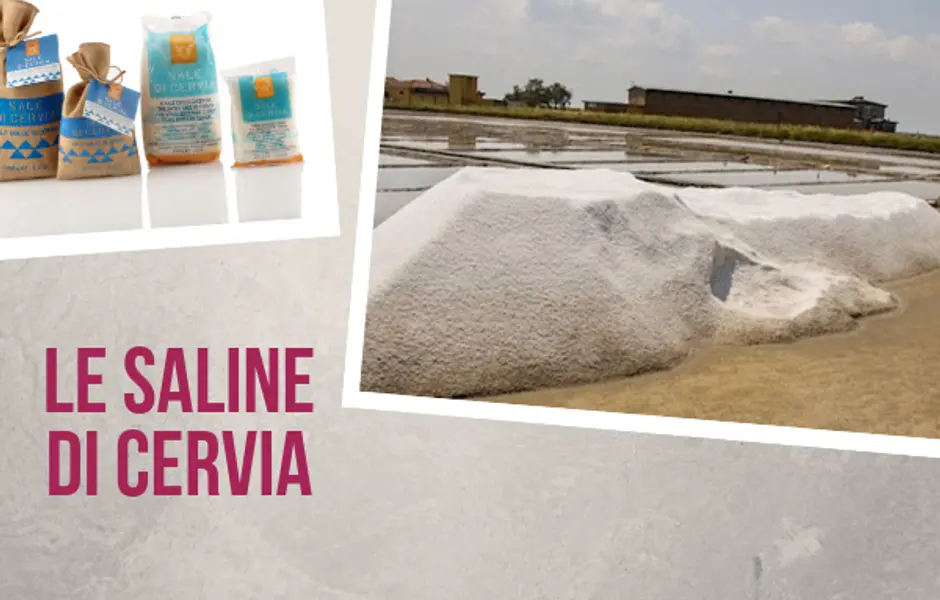Do you know the sweet salt of Cervia?
Cervia salt is called "sweet" because it contains a limited amount of so-called "bitter" salts, such as magnesium chloride and calcium sulphate, mostly insoluble substances that make this salt unique, while maintaining its salting capacity.
It is also "complete" because thanks to its natural moisture and the meticulous workmanship, it preserves all the trace elements present in seawater.
A bit of History on Cervia Salt
The first evidence of the salt flat dates back to the 10th century AD, but some recent findings suggest that it was already present in Roman times.
Over time, Cervia became an important economic centre in Italy for the artisanal production of salt for commercial purposes: at the time salt was a rare and expensive commodity defined as white gold, used as an exchange currency, since it was the only one way to store food.
The method by which Cervia salt is extracted is called "Cervese", precisely because it is practiced only there, which is why Cervia is also called the city of salt.
Every year in September you can watch the historical re-enactment of the "Armesa de Sel" (Salt Storehouse), which once concluded the salt harvest; in fact the salt was transported with flat-bottomed transport boats in special warehouses along the Porto Canale of Cervia, which guaranteed conservation.
During the historical re-enactment, a boat slowly slides along the canal with a load of 100 quintals of salt to be donated to the visitors, piled along the banks: giving salt is considered a very auspicious gesture!
Today the ancient warehouse-tower has been transformed into a museum (MUSA) while in the salt flats, which have become a Natural Park within that of the Po Delta, salt production continues.
The operating techniques of the Salina di Cervia foresee a traditional processing that is still based on the work of man: the salt is collected once a year (in August) and its processing excludes bleaching, grinding and any additive. The drying takes place in a natural way and the washing uses only high salinity seawater.
Cervia Salt in Cooking
You can buy it flavoured with herbs for meat and vegetables or natural for desserts.
In cooking the "sweetness" of the wholegrain Sweet Sea Salt of Cervia does not alter the taste of the dishes and is also appreciated in quality gastronomic preparations, such as patina, salami, cheeses, anchovies, beer and many other excellent products.
The latest novelty is the Chef's Brick, a pure salt brick pressed for cooking without adding fat like on soapstone. It is heated in the oven for 20/30 minutes for a complete cooking use or 10/15 minutes for heated up dishes. It can also be used in the freezer for raw meat or fish.
Ah, we forgot to tell you that even in the kitchen of the Hotel Eliseo we make use of Sweet Salt from Cervia, to exalt the taste of the dishes and for a more complete and correct diet!
Visiting Cervia Salt Flats
Among the activities offered by the Visitor Centre there is the Walk in the Salina, a guided tour to discover the natural treasures of the area, and the excursion In salina in barca, the fascinating electric boat ride along the salt flat.
Excursions and itineraries are available from June to September and usually last a couple of hours; reservations required.
Cervia is only 20 minutes by car from the Hotel Eliseo in Bellaria Igea Marina, in Emilia Romagna.
Don't forget to ask for information at our hotel - we will be happy to help you organize your visit to the salt flats and other parts of the Romagna Riviera territory!
Sweet Salt from Cervia
A true excellence of Romagna
Published on 28 March 2019


